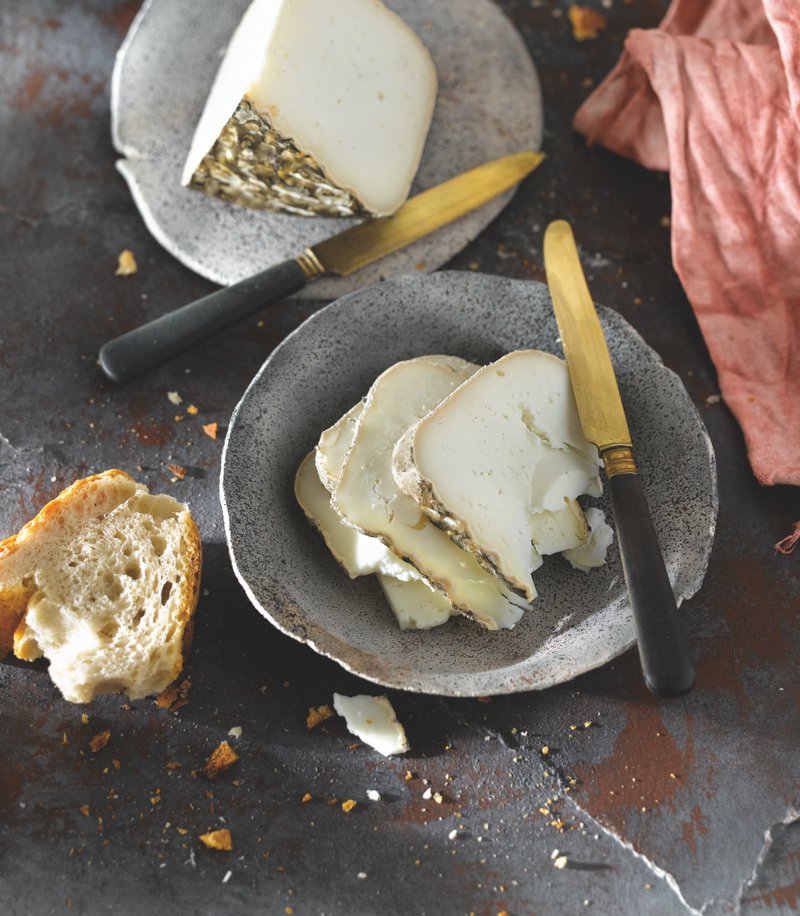Basket
Text: CUINA MAGAZINE Photo: Anna García Frigola
Garrotxa’s pride
Research into this cheese native to the Girona county rescued it from oblivion
Garrotxa cheese very nearly became extinct until a research project looking into the origins of the cheese that was once made from the milk of Garrotxa goats led to its revival in the 1980s. Since then, the semi-soft white cheese native to the county in the northern Catalan province of Girona has become one of the most popular to produce among the country’s craft cheesemakers.
The rind of the cheese is off-white in colour and either smooth or slightly wrinkled, while the cheese within has a sharp and creamy taste. It’s usually made with pasteurised goat’s milk, and added to it is lactic acid yeast, calcium chloride and rennet, which produces a curd that is not too hard. It is then thinly cut into small pieces, while some of the whey is removed and replaced using hot water. The process continues until the cheese is compacted and moulded, and is completed by brining and time spent ripening in the maturation chamber, where it develops its characteristic rind over a period of 21 days.
Garrotxa cheese goes particularly well with crunchy bread, pears, and nuts, especially walnuts, almonds or hazelnuts. It also makes an ideal conclusion to a meal after dessert. It goes well with white wines, especially those made with the Pinot gris, Verdejo, or Chardonnay grape varieties.
In recent years, there has been a campaign underway for Garrotxa cheese to get its own geographical indication, or GI, which is designated to products that correspond to a specific geographical location or origin and provides them with legal protection.

